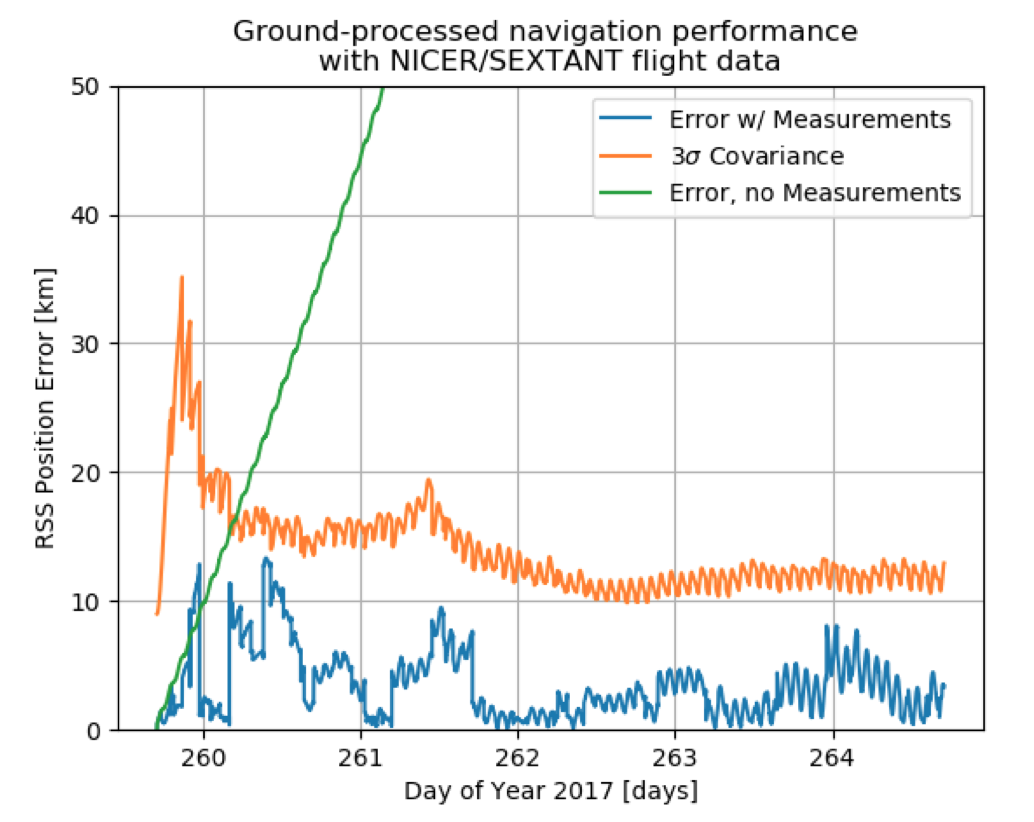NICER / ISS Science Nugget for November 11, 2017SEXTANT Ground Tests Contribute to On-going ExperimentUsing NICER flight data recorded from September 17 – 22, 2017, the SEXTANT team ran its flight software on a ground computer, and successfully demonstrated navigation using only X-ray pulsar observations. The software's GEONS navigation filter was initialized with a degraded state designed to diverge rapidly from the truth state. The successful ground demonstration represents an essential milestone toward a fully autonomous on-orbit demonstration, initial trials of which are currently underway. In the accompanying figure, system performance without measurements, depicted in green, rapidly diverges from the truth state, as expected. Performance while processing X-ray pulsar measurements, shown in blue, initially exceeds the current performance target of 10 km RSS, but reaches that performance target within one day and robustly remains below 10 km RSS for the remainder of the schedule. A total of 494 measurements were processed from the X-ray "beacon" pulsars J0437-4715 (143), B1937+21 (316), J0030+0451 (33), and J0218+4232 (2).
These ground results were used to tune the flight GEONS filter for the autonomous on-board navigation tests now running. The SEXTANT experiment on the ISS NICER payload is on track to demonstrate navigation technology that will eventually enable new deep-space exploration, to the outer planets and beyond. NICER
|



